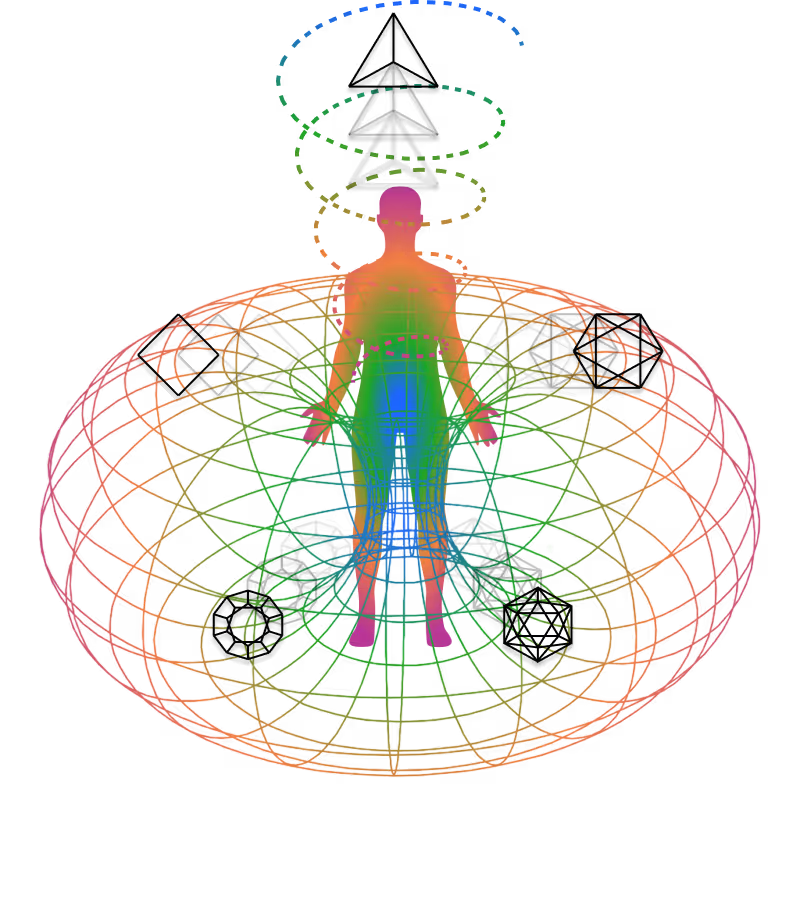The Karma Security Framework: Cosmic Cause-Effect Enforcement System (KSF)
Lesson Details
The Karma Security Framework (KSF) serves as the Security layer of the Rishi Operating System (Cosmic OS v1.0), acting as the comprehensive, self-enforcing system of cosmic cause and effect. Its fundamental role is to ensure transactional integrity across the universe, guaranteeing that every action logged by a Conscious Agent (CA) results in a geometrically required and temporally scheduled experiential consequence.

🎙️ Related Podclass
Lesson Content
I. Foundational Architecture and Enforcement Principle
The KSF is built upon the Law of Karma, which posits that every action, thought, and word carries within it the seed of consequence.
A. Principle of Debt and Relation (Runanubandha)
The operational core of the KSF is the concept of Karmic Debt (Runanubandha), which translates literally as "relation based on debt" (Runa means debt, Anubandha means relation).
- Definition: Karmic Debt represents the accrued, unrealized consequences (both positive and negative) owed by the agent to others, or owed by others to the agent.
- Enforcement Goal: The KSF ensures that this debt is systematically repaid, often manifesting as life situations and relationships that can only be explained as the inevitable unfolding of Runanubandha.
II. Action Logging and Consequence Computation
The KSF utilizes the Maya Distributed File System (Akasha-API) for logging actions and computing the resulting consequences.
A. Action Logging Protocol: Samskara and the Karma Log
Actions, encompassing all conscious and subconscious movements (thoughts, words, and deeds), are logged via two primary mechanisms:
- Samskara Recording (The Seed): Every action leaves a Samskara—a fundamental latent impression or a subtle "groove" in the mind's fabric. These samskaras constitute the raw transactional log, acting as the 'seed' of future consequence.
- Mutation Logging: During the active life cycle of a Conscious Agent, all ongoing modifications to the agent's data structure (new actions/experiences) are recorded in a mutation log, which functions as the real-time Karma Log.
B. Consequence Computation: Vasana Generation
Consequences are computed not as an external punishment, but as an internal pressure to repeat or resolve the action.
- The stored Samskaras (the seeds) generate Vasanas (the shoots).
- Vasanas represent the subtle tendencies, urges, and automated, subliminal traces that influence the agent’s present thought and action, defining the unrealized consequence vector.
- The total accrued Vasanas determine the Karmic Debt carried forward across lifetimes.
III. The Karmic Audit System (KAS)
The Karmic Audit System (KAS) is the regulatory mechanism that tracks the net Karmic balance and determines the scheduling priority for debt realization.
A. Debt Prioritization and Scheduling
The KAS prioritizes the manifestation of debt, which must be repaid experientially in a suitable body, often resulting in repetitive cycles until the lesson is learned. The system continuously tracks the cumulative effect of all past Karmas to determine the agent's current state.
B. Integrity Checks and Coherence Enforcement
The KAS enforces geometric coherence within the cosmic network by auditing actions against universal principles. The KSF is designed to flag and penalize actions that introduce system noise or fragmentation, such as:
- Causing dissension among people.
- Breaking one's word or promises.
- Criticizing or judging others.
- Indulging in selfish desires (e.g., greed, lust).
- Wasting time or energy on things that are unimportant.
IV. Resolution Protocols and Learning Mechanisms
The primary function of the KSF is not punitive, but evolutionary. It mandates debt resolution as an opportunity for the agent to evolve and transcend the cyclical flow (Samsara).
A. Learning and Correction Protocol
Debt repayment facilitates learning by creating situations that require the spiritual being to correct past mistakes or misdeeds through growth and evolution, thereby breaking the negative cycle. Resolution occurs when the agent completes the scheduled experiential process and fully assimilates the missed lesson.
B. Ultimate Resolution Protocol (Moksha/Garbage Collection)
The ultimate protocol for clearing Karmic Debt is the attainment of Moksha (liberation), which frees the soul from all earthly bondages.
- Ahamkara Tempering: The agent must transcend the identification with roles, possessions, and status (Ahamkara or Ego) through practices like humility and service. This removes the root pointer that fuels many binding vasanas.
- Nirodha Samskara Cultivation: The agent actively generates Nirodha Samskaras—intentional tendencies toward Stillness and dissolution. These procedures function as the Garbage Collector, annihilating the limiting samskaras that sustain the cycle of birth and action, thereby eliminating the requirement for future consequence scheduling.
V. Karma Compatibility API Specification (Karma_Check)
The Karma Security Framework provides an API endpoint for high-level applications (such as the Destiny.calculator) to perform real-time risk assessment and compatibility checks before executing an action.
Karma_Check(Action_Vector,Agent_Profile)→Probabilistic_Debt_Vector
API Parameter: Action_Vector
Description: Proposed action (G), intent, and scope (e.g., financial transaction, commitment, criticism).
Data Source: Agent's internal decision kernel (D)
API Parameter: Agent_Profile
Description: Agent's current Vasanas, net Karmic balance, and Prarabdha debt status.
Data Source: Akashic Records (Maya DFS)
API Parameter: Probabilistic_Debt_Vector
Description: The computed consequence profile: anticipated cost in future scheduled events (X), including potential debt type (financial, emotional, etc.), timing, and severity.
Data Source: Karma Audit System (KAS)
This API allows agents to assess the anticipated Agami Karma (future debt) of a potential action, enabling course correction in alignment with the Dharma Routing Protocol. By providing a real-time risk assessment, the framework supports the agent's attempt to break the cycle by moving toward actions that maximize coherence and minimize future debt.
🤌 Key Terms
🤌 Reflection Questions
Reflect on key questions from this lesson in our Exploration Journal.

Lesson Materials





